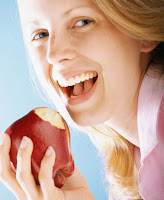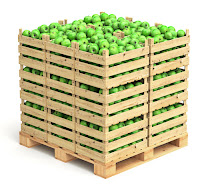 Fruit can alternatively undergo a mild non-destructive test where the deformation response of a large cylinder probe or platen is measured to effectively mimic the compression between one’s fingers.
Fruit can alternatively undergo a mild non-destructive test where the deformation response of a large cylinder probe or platen is measured to effectively mimic the compression between one’s fingers. However this has the problem of measurement variability due to differing contact area with the fruit surface which varies because of irregularities in fruit shape and size and results may then be compromised for the convenience of using such a test.
One way to address this is by firstly measuring the diameter of the fruit and then measuring the force to achieve, for example, 2% deformation on the equatorial zone (fruit diameter). Results are then expressed as the force-deformation ratio – the ratio between the force that achieved the 2% deformation of the fruit and the fruit diameter (N/mm) multiplied by 100. When testing the fruit in this way, a bevelled holder is often located under the fruit to prevent bruising of the opposite side. For large fruits, three measurements around the equatorial zone may be possible without overlap of test regions.
Alternatively when compressing large fruit, such as whole pineapples, on their equatorial region, the compression could be stopped at a force, for example, of 50N and the gradient of the force/deformation curve used to indicate the firmness.
Measuring the bruising potential of whole fruit
Apples are abundant in Europe, with hundreds of varieties available for snacks and in processed desserts and jams. Gaining and maintaining market share for apples in their perishable state depends heavily on the quality/maturity of crop at harvest. Factors influencing this include cultivar, climate, soil quality, chemicals and water. However, growers generally lack reliable crop maturity indices to gauge the possible effects of damage suffered by the crop during harvesting and handling.Measuring the textural properties of apples to determine the likelihood of bruising and/or splitting is a necessary assessment. Resistance to bruising depends on the magnitude and nature of damage and on the stiffness, strength and toughness of the variety. These mechanical properties have far-reaching implications – affecting not only the oral perception of texture, and hence its eating quality, but also storage and cooking properties.
Damage is a major cause of quality loss for fresh fruit markets. For that reason, the strength properties of fruits and vegetables must be known for proper handling, storage and transportation. Knowledge of these properties can help to reduce fruit damage during these operations. These properties depend on the maturity, degree of ripeness and tissue composition and they are useful in predicting shelf life.
During and after harvesting many fruit and vegetables are subject to vibration and compressive loads. Apples, for instance, stored in boxes or bags, are under continual static (slow) compression but, when moved, they may also experience faster compressive forces due to impact such as dropping which can be uneconomical if splitting or bruising is extensive.
Apples are normally stored with their central axes lying horizontally to prevent the stalks from piercing the apples above. In boxes containing several layers of apples, this means that most of the apples bruise on the cheeks. It is important, therefore, that the mechanical properties of the apple enable it to withstand as great a deformation as possible, under stacking layers, without damage.
 |
| Annotated curves of compression test of whole apple |
Peaks are displayed upon bruising and as the apple splits a large decrease in force is experienced. The main indication is that the higher the deformation distance before compressive failure of the sample (leading to bruise formation) the better the fruit is able to withstand stacking weight.
Watch the video below to see a summary of the types of testing possibilities that are available for the measurement of fruit and vegetable texture to provide quality control tools and ultimately, consumer satisfaction:

For more information on how to measure texture, please visit the Texture Analysis Properties section on our website.
 The TA.XTplus texture analyser is part of a family of texture analysis instruments and equipment from Stable Micro Systems. An extensive portfolio of specialist attachments is
available to measure and analyse the textural properties of a huge range of
food products. Our technical experts
can also custom design instrument fixtures according to individual
specifications.
The TA.XTplus texture analyser is part of a family of texture analysis instruments and equipment from Stable Micro Systems. An extensive portfolio of specialist attachments is
available to measure and analyse the textural properties of a huge range of
food products. Our technical experts
can also custom design instrument fixtures according to individual
specifications.No-one understands texture analysis like we do!
To discuss your specific test requirements, click here...
 |  |  |


No comments:
Post a Comment